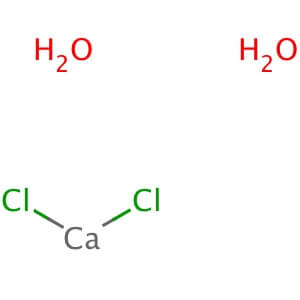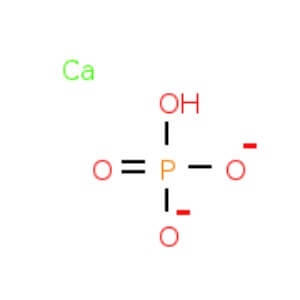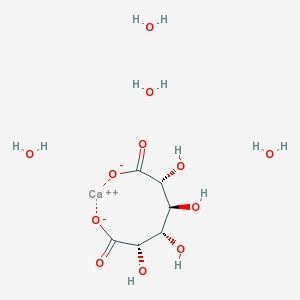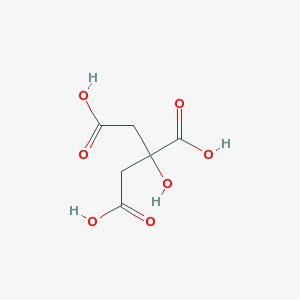Products
Showing 13–18 of 74 items
Calcium Chloride Dihydrate
CAS NO: 10035-04-8
MOLECULAR FORMULA :- CaCl2.2H2O
MOLECULAR WEIGHT :- 147.01 g/mol
SPECIFICATION IP BP USP Description A White, Crystalline powder or fragments or granules, odorless, hygroscopic. White or almost white, crystalline powder, hygroscopic. White or almost white, crystalline powder, hygroscopic. Solubility – Freely soluble in water and soluble in ethanol (96 %) – Appearance of solution Clear and not more intensely colored than reference solution YS6. 10 % solution is clear and not more intensely colored than reference solution Y6. – Identification (A) Reaction Of Calcium
(B) Reaction of Chlorides
(C) Assay
A. Reactions of Calcium salts B. Reactions of Chlorides
A. 10% solution gives reaction of chloride B. It gives reaction of calcium
C. It complies with the limit test of assay
A. Reactions of Calcium salts B. Reactions of Chlorides
Acidity or Alkalinity To 10 ml of freshly prepared 10 % w/v solution add 2 drops off phenolphthalein solution. Titrate with 0.01 M hydrochloric acid or 0.01 M sodium hydroxide. If the solution is red , than not more 0.2 ml of 0.01 M HCL need to discharge the color and if the solution is colorless, not more than 0.2 ml NaOH is required to turn it red. – pH – – 4.5 – 9.2 Arsenic NMT 3 ppm. – – Barium After not less than 15 min. the solution is not more opalescent than a mixture of 10 ml of solution and 1 ml of distilled water. After 15 min, Any opalescent in the solution is not more intense than that in a mixture of 1 ml of distilled water and 1.0 gm of sample. – Aluminum &Phosphate (IP)
No turbidity or precipitate is produced. No turbidity or precipitate is formed. NMT 1 ppm Iron , Aluminum &Phosphate – – No turbidity or precipitate is formed. Heavy metals NMT10 ppm – NMT10 ppm Iron NMT 20 ppm. NMT 10 ppm – Magnesium and Alkali salts NMT 1.0 % NMT 0.5 % NMT 1.0 % Sulphate NMT 300 ppm NMT 300 ppm – Organic Volatile impurities – – Meets the requirements Assay 97.0 % to 103.0 % 97.0 % – 103.0 % 99.0% – 107.0% Calcium Citrate
CAS NO: 5785-44-4
Molecular Formula: Ca3(C6H5O7)2•4H2O
Molecular Weight: 570.50
Synonyms Calcium(II) citrate, Tricalcium citrate Product Information Grade DAC,USP,E 333,FCC Hill Formula C₁₂H₁₀Ca₃O₁₄ * 4 H₂O Molar Mass 570.51 g/mol HS Code 2918 15 00 Appearance : Powder Physical State : Solid Solubility : Soluble in 0.1 M HCl (0.01 M at 20° C), and water (1 g/l at 20° C). Storage : Store at room temperature Boiling Point : 309.6° C at 760 mmHg (Predicted) Calcium Gluconate
CAS NO 18016-24-5
MOLECULAR FORMULA : C12H24CaO15
MOLECULAR WEIGHT: 448.39
Chemical name: Calcium Gluconate Monohydrate Similar Products: 299-28-5( Ca salt) Category: impurities,metabolites,pharmaceutical standards,intermediates,Fine Chemicals Synonyms: Calcium (2R,3S,4R,5R)-2,3,4,5,6-pentahydroxyhexanoate Hydrate; Calcium bis[(2R,3S,4R,5R)-2,3,4,5,6-pentahydroxyhexanoate] Monohydrate;Calcium di(D-Gluconate) Monohydrate; D-Gluconic Acid Calcium Salt Monohydrate; Calcium D-Gluconate Monohydrate; Molecular form: C12H24CaO15 Appearance: NA Storage: 2-8°C Refrigerator Shipping Conditions: Ambient Applications: NA Calcium Phosphate Di Basic
CAS NO: 7757-93-9
Molecular Formula: CaHPO4
Molecular Weight: 136.06
Description Synonyms Calcium orthophosphate, Calcium phosphate dibasic Description Calcium hydrogen phosphate Product Information CAS number 7757-93-9 EC number 231-826-1 Grade Ph Eur,BP,USP,FCC,E 341 (ii) Hill Formula CaHO₄P Chemical formula CaHPO₄ Molar Mass 136.06 g/mol HS Code 2835 25 00 Quality Level MQ500 Physicochemical Information Density 2.89 g/cm3 (20 °C) Melting Point 370 °C (decomposition) pH value 7 (10 g/l, H₂O, 20 °C) suspension Bulk density 900 kg/m3 Solubility 0.1 g/l Toxicological Information LD 50 oral LD50 Rat 10000 mg/kg LD 50 dermal LD50 Rabbit > 7940 mg/kg Safety Information according to GHS RTECS TB8528000 Storage class 10 – 13 Other liquids and solids WGK WGK 1 slightly hazardous to water Disposal 14 Inorganic salts: Container I. Neutral solutions of the these salts: Container D. Before placing in Container D, check the pH with pH-Universal indicator strips Storage and Shipping Information Storage Store at +2°C to +30°C. Transport Information Declaration (railroad and road) ADR, RID Kein Gefahrgut Declaration (transport by air) IATA- DGR No Dangerous Good Declaration (transport by sea) IMDG- Code No Dangerous Good Specifications Identity passes test Assay (complexometric) 97.5 – 102.5 % Assay (complexometric; calculated on dried substance) 98.0 – 102.0 % Substances insoluble in hydrochloric acid ≤ 0.2 % Carbonate (as CO₂) passes test Chloride (Cl) ≤ 0.03 % Fluoride (F) ≤ 0.0050 % Sulfate (SO₄) ≤ 0.5 % Al (Aluminium) ≤ 0.0200 % As (Arsenic) ≤ 0.0001 % Ba (Barium) passes test Cd (Cadmium)* ≤ 0.0001 Fe (Iron) ≤ 0.0400 % Hg (Mercury) ≤ 0.0001 % Ni (Nickel)* ≤ 0.0010 Pb (Lead)* ≤ 0.0001 Sr (Strontium) ≤ 0.03 % V (Vanadium)* ≤ 0.0010 % Residual solvents (ICH Q3C) excluded by production process Loss on ignition (800 °C) 7.0 – 8.5 % Loss on drying ≤ 2.0 % Particle size (< 63 µm) about 99 % Elemental impurity specifications have been set considering ICH Q3D (Guideline for Elemental Impurities). Class 1-3 elements are not likely to be present above the ICH Q3D option 1 limit, unless specified and indicated (*). Corresponds to Ph.Eur.,BP,USP,FCC,E341 (ii) Conforms to the purity criteria on food additives, except for use as additive in infant and young child nutrition, according to the current European Commission Regulation. Calcium Saccharate
CAS NO: 5793-89-5
MOLECULAR FORMULA: C6H8O8•Ca•4H2O
MOLECULAR WEIGHT: 320.27
Chemical Name Calcium Saccharate Tetrahydrate Synonyms Calcium (2R,3S,4S,5S)-2,3,4,5-tetrahydroxyhexanedioate tetrahydrate; Calcium Saccharate CAS Number 5793-89-5 Appearance White to Off-White Solid Melting Point >185ºC (dec.) Molecular Weight 248.20 + x(18.02) Storage Hygroscopic, Refrigerator, under inert atmosphere Solubility Aqueous Acid (Sparingly, Sonicated) Stability Hygroscopic Category Building Blocks; Miscellaneous; Pharmaceutical/API Drug Impurities/Metabolites; Purity: ≥98% Applications D-saccharic acid calcium salt tetrahydrate is an inhibitor of beta-glucuronidase Citric Acid Anhydrous
CAS NO: 77-92-9
MOLECULAR FORMULA :- C6H8O7
MOLECULAR WEIGHT :- 192.13
SPECIFICATION IP BP USP Description Colorless crystals or white powder, slightly hygroscopic in moist dry air. White or almost white, crystalline powder, colorless crystals or granules White Powder Solubility – Very soluble in water, freely soluble in ethanol (96 %). – Clarity of Solution – – The Test solution shows the same clarity as that of water. Appearance of solution (color) 20 % w/v. solution is clear and not more intensely colored than reference solution YS7,BYS7 OR GYS7. 20 % w/v solution is clear and color less or not more intensely colored than reference solution Y7, BY7 and GY7. The test solution is not more intensely colored than standard solution A,B, or C, or Water. Identification (A) Reaction
(B)) By IR Absorption
(C) Reaction
(D) Reaction
(E) Test of water
A. A 10 % w/v solution is strongly acidic. B. Reactions of citrates
A. 10 % w/v solution is strongly acidic B. Must comply with the Citric acid anhydrous CRS.
C. A red color develops
D. White precipitate is produced
E. Complies with the test of water.
A. By IR Spectrum
Arsenic NMT 1ppm. – – Bacterial end toxins – – The level of bacterial endotoxins is such that the requirement in the relevant dosage form monograph(S)in which citric acid monohydrate is used can be met. Sterility – – Meets the requirements for sterility. Barium Any opalescence in the solution is not more intense than that in a mixture of 5 ml of solution and 5 ml of distilled water. – – Calcium NMT 200 ppm – – Heavy metals NMT 10 ppm NMT 10 ppm Iron NMT 50 ppm – – Readily carbonisable substance Any color produced is not more than intense than that of the a mixture of 1.0 ml of CCS and 9.0 ml of FCS. The solution is not more intensely colored than a mixture of 1 ml of red primary solution and 9 ml of yellow primary solution. The color of acid is not darker than that of a similar volume of matching fluid K Sulphates NMT 150 ppm NMT 150 ppm NMT 150 ppm Oxalic acid Any pink color is produced is not more instance than that produced by carrying out the test using 0.2 mg of oxalic acid dissolve in 4 ml of water. . NMT 360 ppm NMT 360 ppm Limit of Aluminium – NMT 0.2 PPM The fluorescencence of the test solution does not exceed that of the standard solution (0.2 µg/g) Residual Solvents – – Meets the requirements Organic Volatile impurities – – Meets the requirements Chlorides NMT 50 ppm – – Water by KF NMT 1.0 % NMT 1.0 % NMT 1.0 % Sulphated ash NMT 0.1 % NMT 0.1 % NMT 0.1 % (residue on ignition) Assay 99.0 % to 101.0 % 99.5 % – 100.5 % 99.5 % – 100.5 %
Showing 13–18 of 74 items






